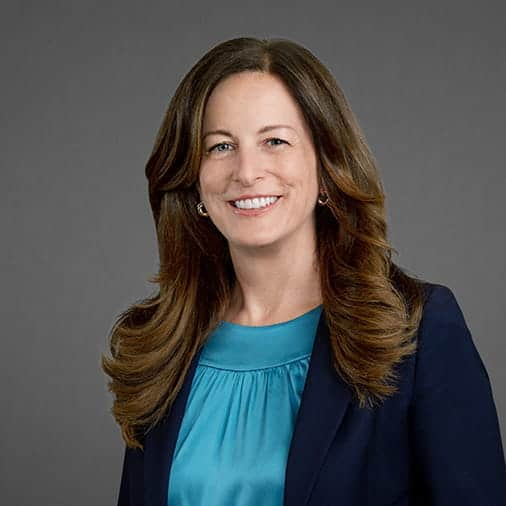ESG and Commercial Real Estate Case Study
New and complex laws intended to increase the sustainability, climate resilience, and efficiency of commercial buildings are rapidly emerging across the US and worldwide. While some laws have required the disclosure of energy and water use in buildings for years, numerous state and local jurisdictions are now instituting "building performance" laws that require building energy use reductions and carbon emissions caps, together with penalties for failing to meet these new standards. DLA Piper can help commercial real estate owners and property managers understand and take proactive steps to meet these requirements in ways that support sustainability initiatives while avoiding unexpected financial burdens.
Navigating an evolving regulatory landscape
Building performance laws typically hold building owners responsible for legal compliance. But in commercial real estate, the drivers of actual energy and water use in buildings are generally its tenants. This means that buildings not only have to be built to specific requirements, but landlords and tenants must cooperate to ensure that building use and operation meet stated requirements. Strong working relationships and enforceable agreements with tenants and property managers are critical to avoiding penalties and other unanticipated costs.
We are at the forefront of helping clients proactively understand the requirements coming into effect, plan for them, anticipate new requirements, and negotiate "green" leases that help landlords and tenants strategically align priorities and behaviors, and avoid unwanted liabilities. We are also helping our clients understand how these laws could apply to their buildings under various future regulatory scenarios if their buildings rely on utility services from the grid (which may be powered by fossil fuels).
Practice example: Building decarbonization and clean energy law tracking
Issue
Our client, a leading international real estate owner focused on the life science and technology sectors, is subject to numerous ESG laws that are difficult to find, hard to understand, and frequently changing. Our client needed help to identify, summarize, and then track proactively the rapidly changing legal landscape of international, state, county, and city laws, regulations, and building codes that are driving decarbonization of buildings and forcing utilities to replace fossil-fuel-powered electricity with clean energy sources. This client sought a trusted partner to track and summarize laws that fall under the following interrelated, cross-disciplinary legal topics:
- "Benchmarking and Disclosure Laws": Laws that require building owners to calculate and report building-specific energy usage, energy efficiency measures, water conservation measures, and/or projected greenhouse gas (GHG) emissions from energy usage at a building (or buildings) on a regular reporting schedule.
- "Building Performance/GHG Emissions Cap Laws": Building performance laws or building codes that either (i) prohibit buildings from producing/emitting GHGs beyond certain established caps (which caps may be progressively reduced to reach "net zero" over time), or (ii) require buildings to be built to higher energy efficiency or green building standards.
- "Bans on Fossil Fuel Use or Fossil-Fuel-Powered Utility Connections in Buildings": Laws or building codes that prohibit the use of natural gas (or other fossil fuels) as a direct source of energy for specified buildings; that prohibit building connections to fossil-fuel-powered utility/building infrastructure; and/or that prohibit installation of equipment that use natural gas.
- "Electrical Grid - Clean Energy - Renewable Portfolio Standards (RPS) and Clean Energy Sourcing Requirements": Clean and renewable energy sourcing requirements for public utilities in target cities, including state renewable portfolio standards and regional compacts, that could affect carbon emissions caused by using energy from the grid.
Solution
We assembled a cross-disciplinary team from our deep bench of environmental/ESG and real estate lawyers who have the relevant expertise and skills to track the complex web of decarbonization laws in 22 cities across the United States and United Kingdom. We identified and summarized current laws at the national, state, county, and city levels, and we continue to track changes to these laws and provide updated summaries and regular quarterly reports to capture evolving trends in real time.
Impact
Our client views compliance with ESG-related requirements as critical to its continued success in the marketplace and to its ability to attract a wide range of investors far into the future. By helping our client understand the range of ESG-related requirements affecting its portfolio, assist with current compliance, plan for future compliance, and avoid fines and penalties, we are helping our client achieve these important business objectives.
Comprehensive coverage
The above example is significant, not only because we are tracking emerging laws at the cutting edge of sustainable real estate as they unfold, but because we are covering laws at every scale, down to the most granular level, from national and regional laws to local codes. This scope of coverage is particularly important as more government agencies try to regulate sustainability by increasing climate disclosures while forcing carbon emissions reductions, both in the United States and the European Union. Companies will need to align company-wide reporting with their business operations across numerous jurisdictions, which inevitably will include their real estate assets. Because of our large US and global platform, we are able to offer clients a one-stop shop to understand and track these requirements and translate them in business-friendly ways.
Getting started
The intersection of sustainability and real estate presents numerous challenges that should be met with a thoughtful and deliberate strategy. Our ESG and real estate lawyers are ahead of the curve in helping clients understand the issues and develop practical, real-world solutions to mitigate these multi-dimensional challenges.
We look forward to working with you.





